Measuring Legal: KPIs for In-house legal teams
Demonstrating the Value of Legal
In the thousands of conversations we have with General Counsels around the world each year one question keeps coming up:
‘How do I measure and communicate the value of my team?'
In a world where every budget in the enterprise is now in question, the importance of 'value demonstration' is greater than ever.
Last year Plexus conducted a study of over 100 Legal functions, that found only 28% of GCs felt their business appreciated the value of Legal, yet only 8% are proficient at measuring that value (download the full report here or the summary here).
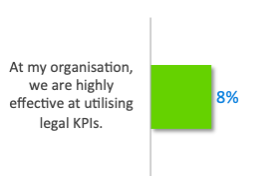
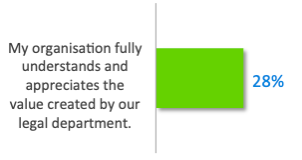
Unsurprisingly, three quarters of end clients do not feel they get value from the time and money they spend with Legal. Because of this, businesses have voted with their dollars and Legal budgets (as a percentage of revenue) are in decline. As one leading GC told us recently, ‘Legal can no-longer be a ‘black box’.
‘Budget defence’ isn’t the only reason to consider measuring the performance of your function either. Our research shows measurement drives performance across almost all executive objectives.
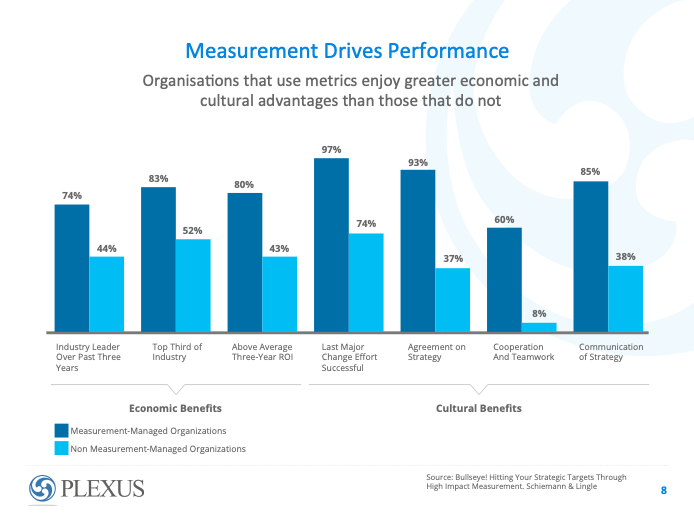
Most General Counsel recognise their team holds a resentment to performance management, which is primarily derived from the tough love many Lawyers experienced during their Law Firm days. In doing so they conflate 'performance measurement' with 'performance management'. Ironically, most GCs who have successfully rolled out 'performance measurement' suggest that (unlike many law firms) one of their goals is to get their lawyers working less.
However, this resentment, combined with limited experience in developing performance measurement systems (as well as a lack of data to support them) has meant, for the most part, 'measuring and demonstrating Legal value is an issue' GCs have ‘kicked down the road’.
The challenge of course becomes two-fold:
- What should we measure?
- How do we get this data (and communicate it)?
Metric management, not micromanagement
Perhaps the biggest challenge facing GCs is that much of the value Lawyers create is subjective.
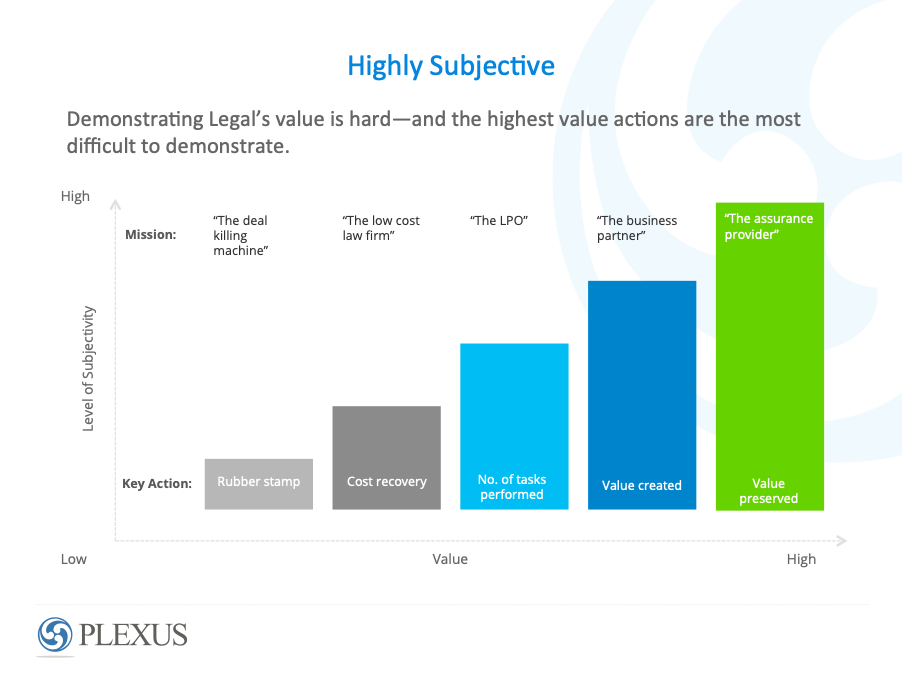
Although ‘number of tasks complete’ or ‘dollars recovered’ are relatively easy measures to quantify, they only have limited correlation to ‘value’.
On the other end of the spectrum, it is near impossible to ‘measure a risk that never occurred’ or ‘the additional value created’ as a result of a Legal counsel being involved.
However, as the adage goes ‘what gets measured, is what gets managed’. Hence, those GCs who only report on budget will find their budget gets managed…down.
Where do I find the data?
Ultimately, venturing down the path of developing a performance management framework is futile if you don’t have a mechanism for tracking what work is coming into your function, who is working on it, how much effort was expended on it, and what the outcome was for the business.
Historically, Legal functions have tried to track this with everything from ‘matter registers’ in spreadsheets to Matter Management software, all with very limited results.
The reason for this is relatively simple, and shared with all ‘Systems of Record’ (e.g. CRMs, ERPs, CMS, HROS) – the person who enters the data into the system is not the person who receives value from it. So ‘updating the Matter Management System’ becomes ‘one more thing to do’ for an already stretched Lawyer.
That has changed with the advent of Legal Operating Systems. The best of these solutions adopt what we call ‘Legal Workflow Management’. Quite simply, the data is generated as a bi-product of getting work done.
Clients can request work, see that work automatically triaged to the right Lawyer on the team, and collaborate with the Lawyer on that matter using workflow and productivity tools (e.g. live chat, digital signature, collaboration portals etc). Each action then generates a rich data source that legal functions can use to measure, optimise and communicate performance.
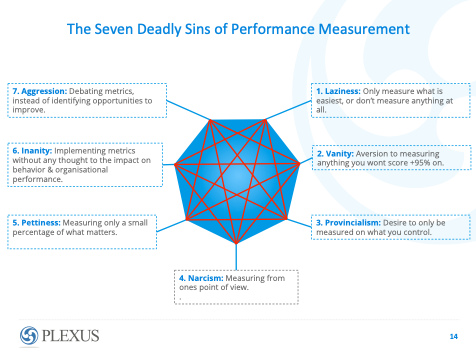
What metrics should a Legal Function track?
What organisations measure is what they become. By extension, tracking no metrics will mean ‘if you aim at nothing you will hit it every time’. Almost as bad is tracking the wrong metrics – which may distort your Legal function’s value. For example, if a function only tracks ‘risk reduction’ it is likely to become so risk-averse that it will destroy value, and become resented by the business.
The North Star Metric
Ultimately, every function should have a ‘North Star’ which, like travellers in ancient times, guides them to the right orientation.
We believe this metric should be focus on Legal’s Core, where ‘Legal Value’ is defined as as:

Note: Total Legal Liability is defined as the total of all damages, fines, settlements or other adverse actions. Legal Drag is defined as the extent to which Legal’s involvement impedes the generation of revenue or efficient execution of strategy.
From this ‘North Star’ you can then undertake a metrics cascade to determine what metrics your function should track. To assist you in this process we surveyed over 70 Legal functions to understand not only what metrics they found most important, but their effectiveness in tracking them.
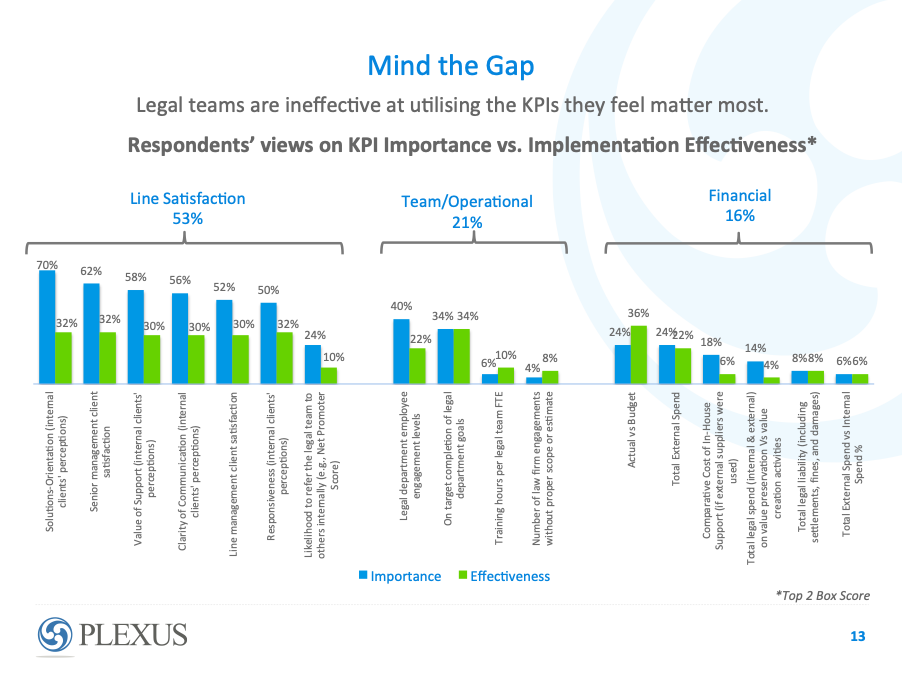
Surprisingly, those metrics which were perceived as most important – client satisfaction metrics – also had the biggest gap between importance & effectiveness.
For a more complete list of metrics you can download our full study here. You may also be interested in our Gartner Best Practice profile on legal analytics.
In God we trust
Mayor Mike Bloomberg famously said ‘In God We Trust. For everyone else – bring data’. Modern executives are sceptical of anecdotal evidence. Most subscribe to the view that ‘if you can’t prove your value with data, your value does not exist’.
What many GCs miss is that the impact of performance measurement extends far beyond ‘value demonstration’ and ‘budget defence’. It is proven, across all functions and industries, to increase employee engagement, strategic alignment, performance improvement, and return on investment. It may be ‘the panacea for all ills’.
Ultimately, if ‘data is the new oil’, failing to utilise it is ‘the match’.
The world's top GCs work with Plexus
As the global economy moves faster and becomes increasingly volatile, organisations must radically evolve their operating models to more dynamically identify and respond to opportunities and threats. Plexus helps leading GCs shift their organisational design, evolve their talent competencies and digitise their functions to deliver faster, most cost-effective and more agile legal support.
Request a call-back
One of our consultants will be in touch ASAP to answer your questions and determine your requirements.
Want to speak to someone instead? Call us on 1300 983 907
Thank you
One of our consultants will reach out to you shortly.
Subscribe
Get weekly legal transformation best practices, benchmarks and trend analysis.
Thanks for subscribing